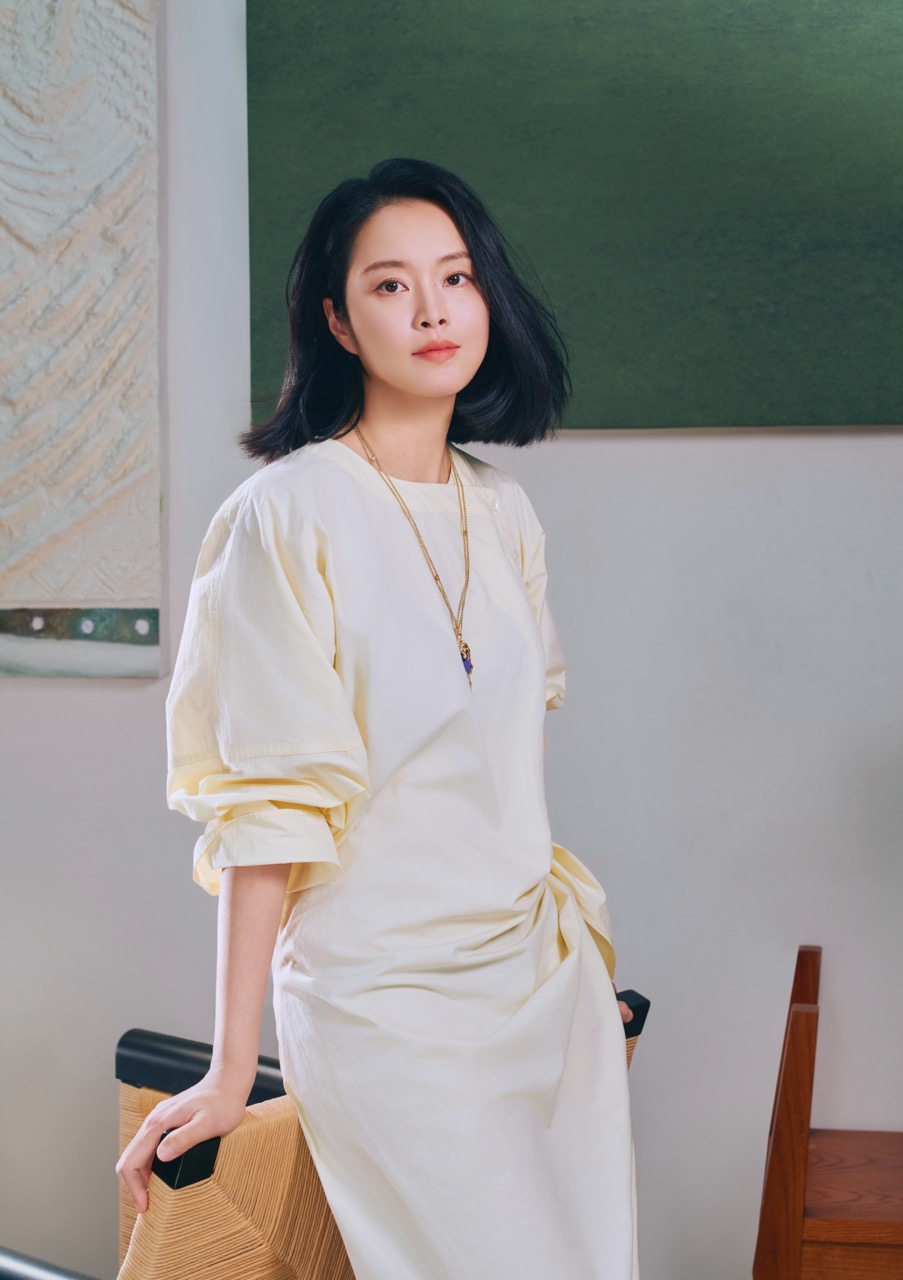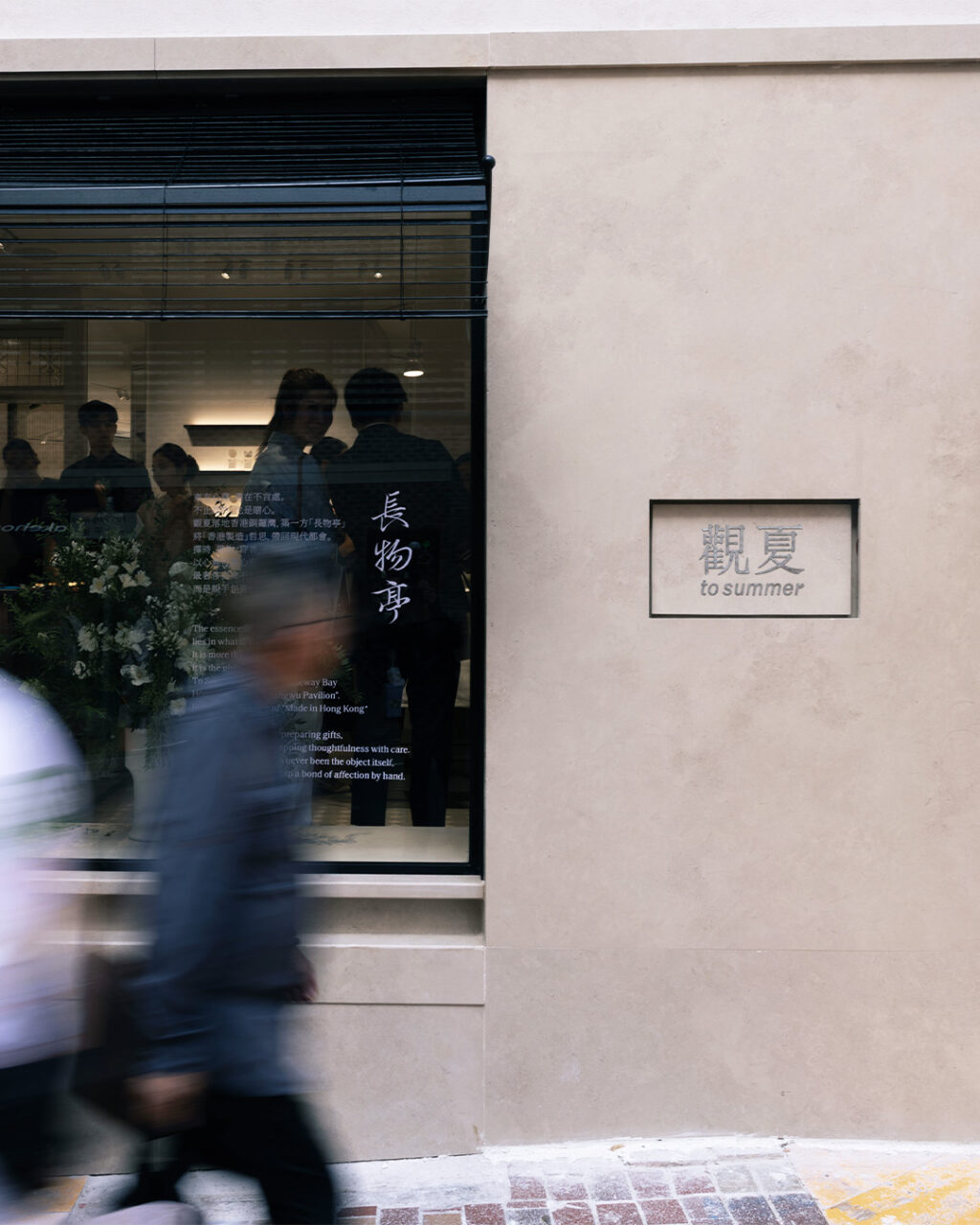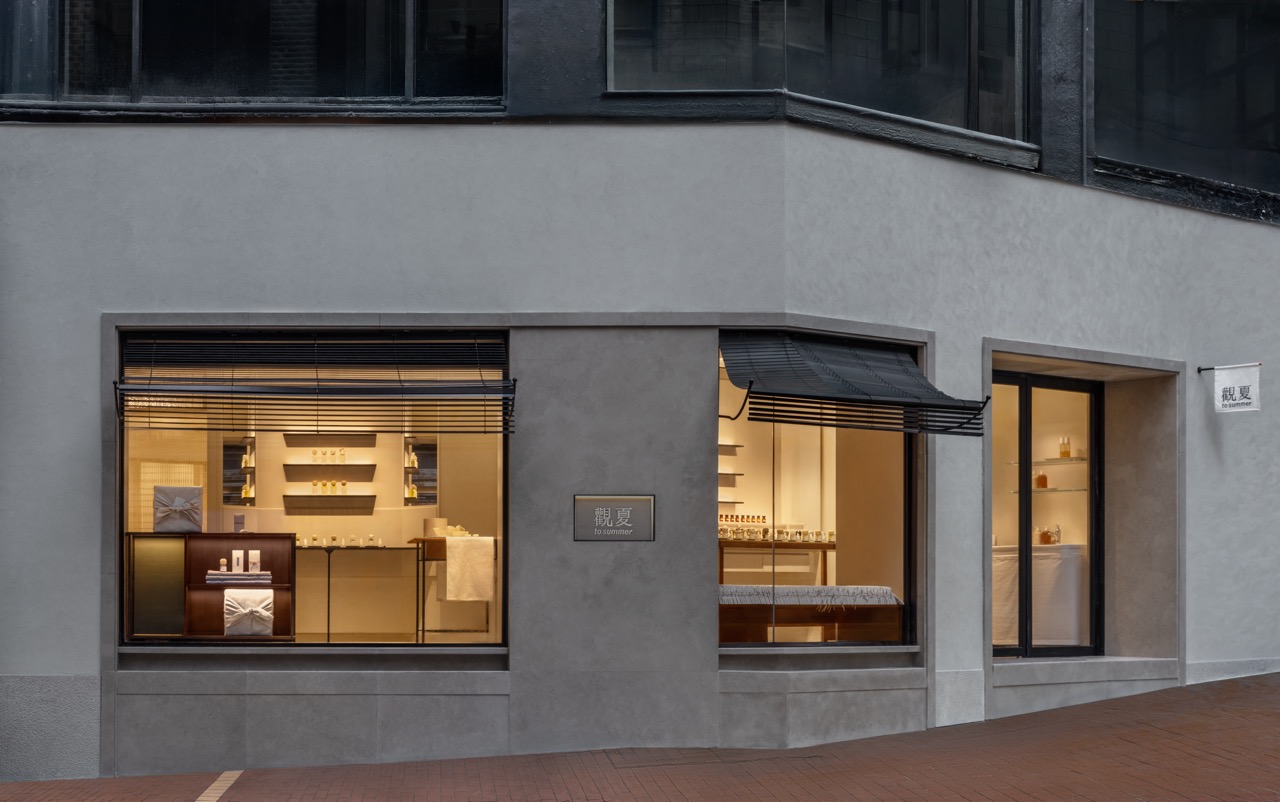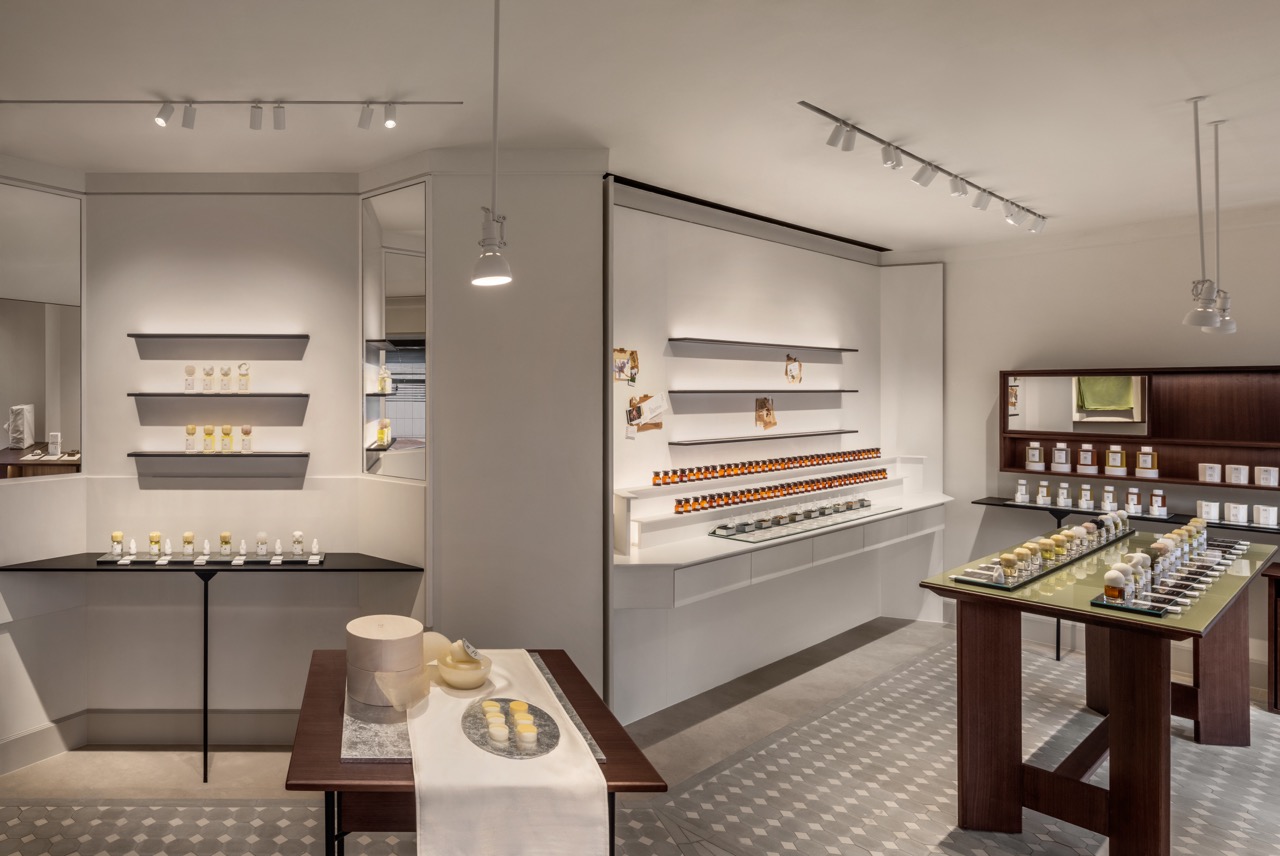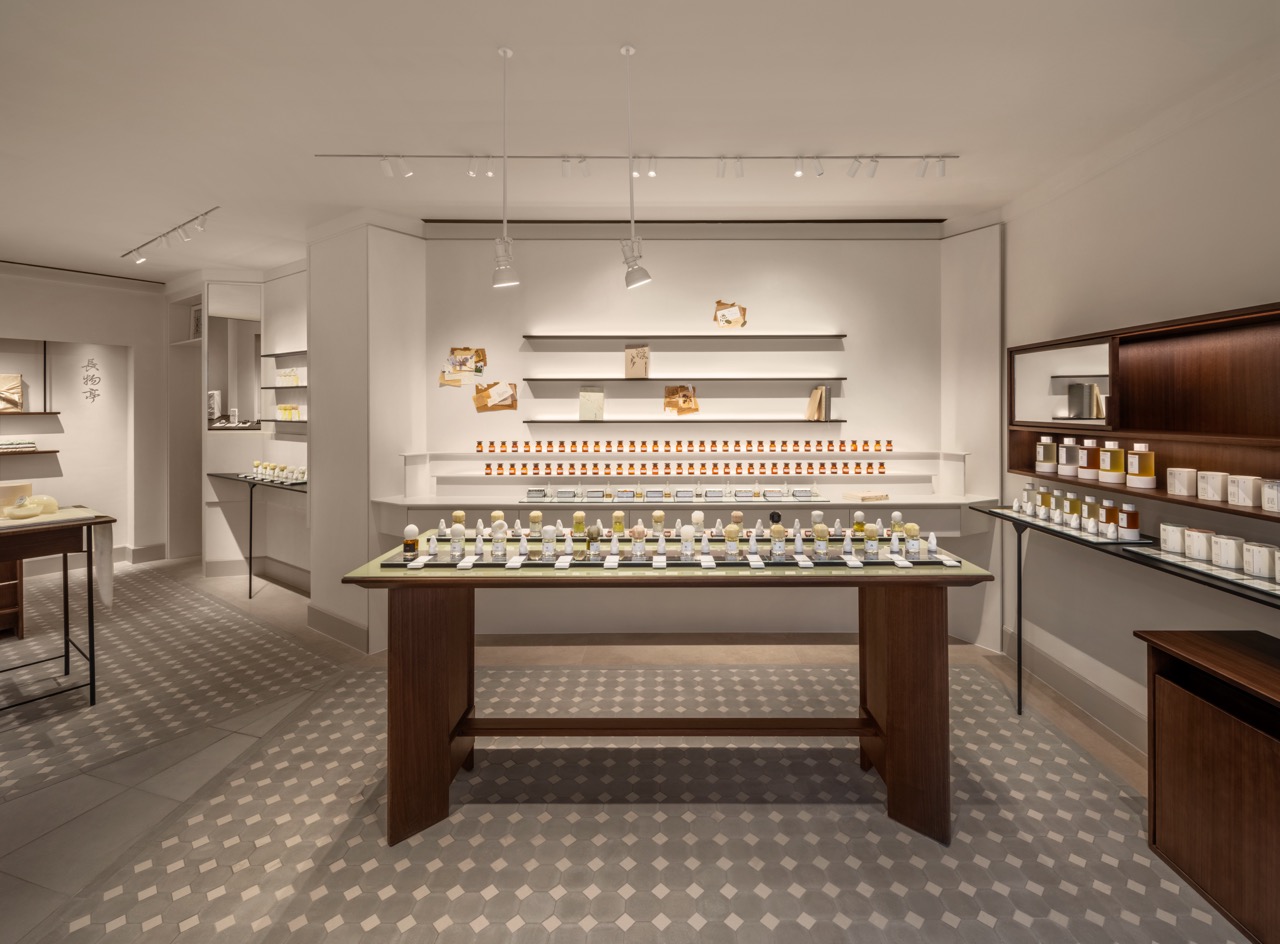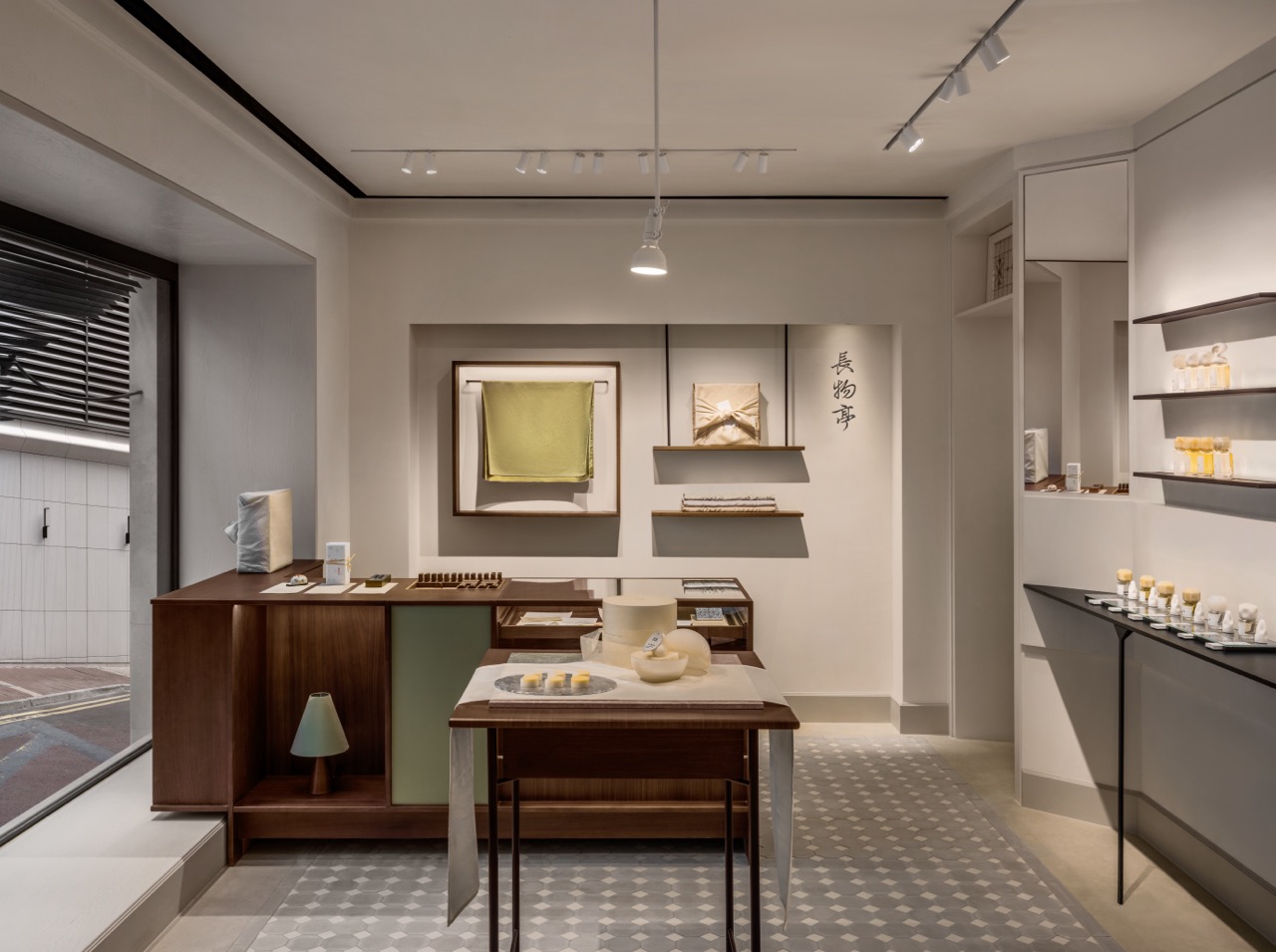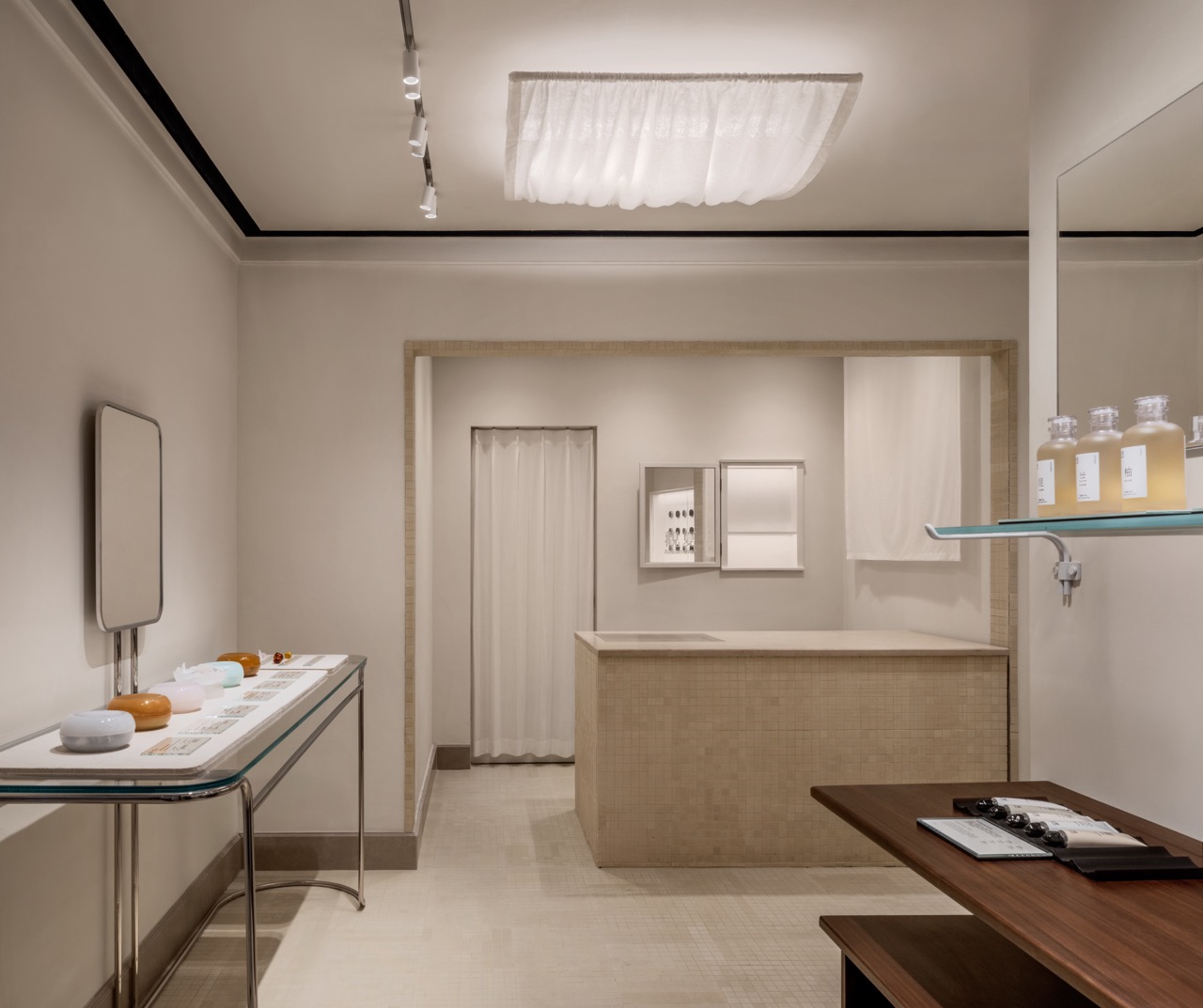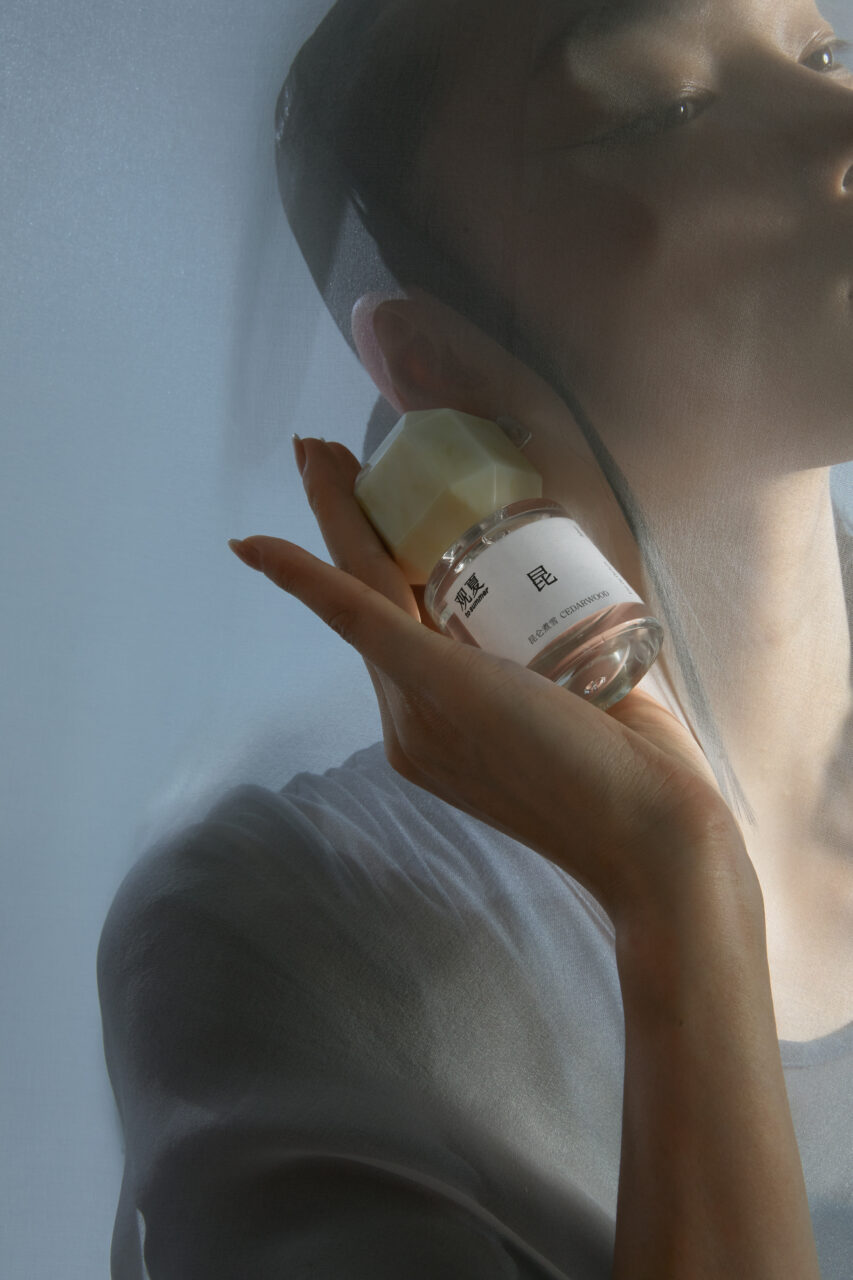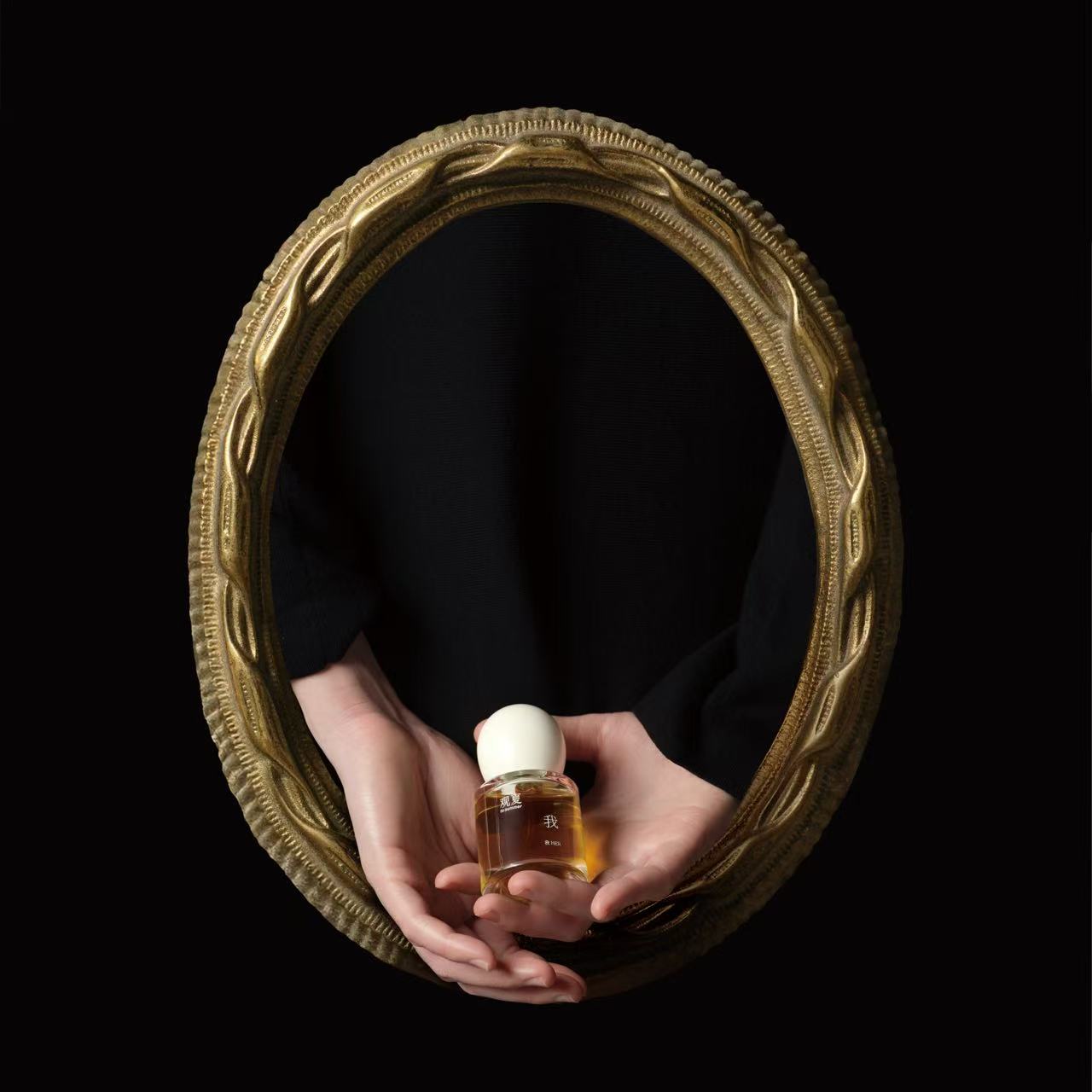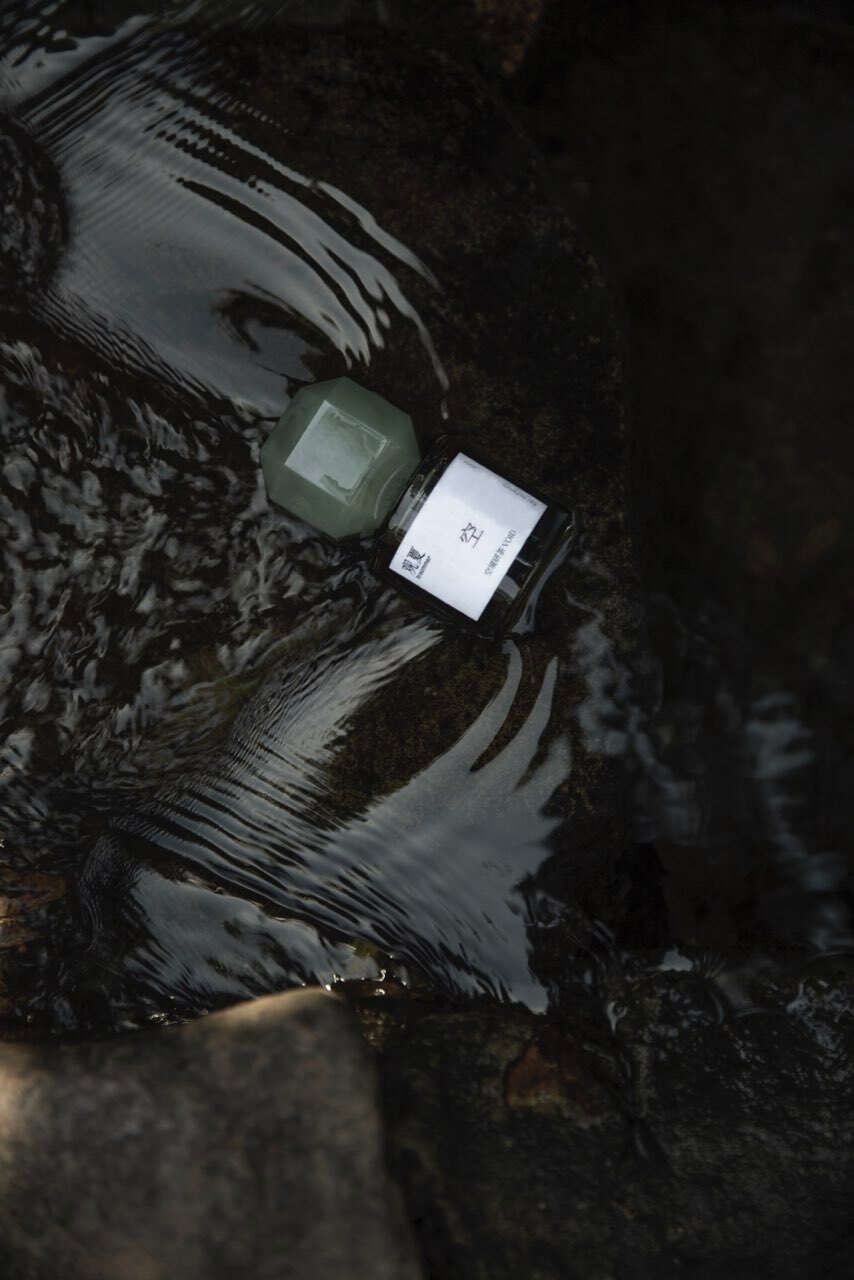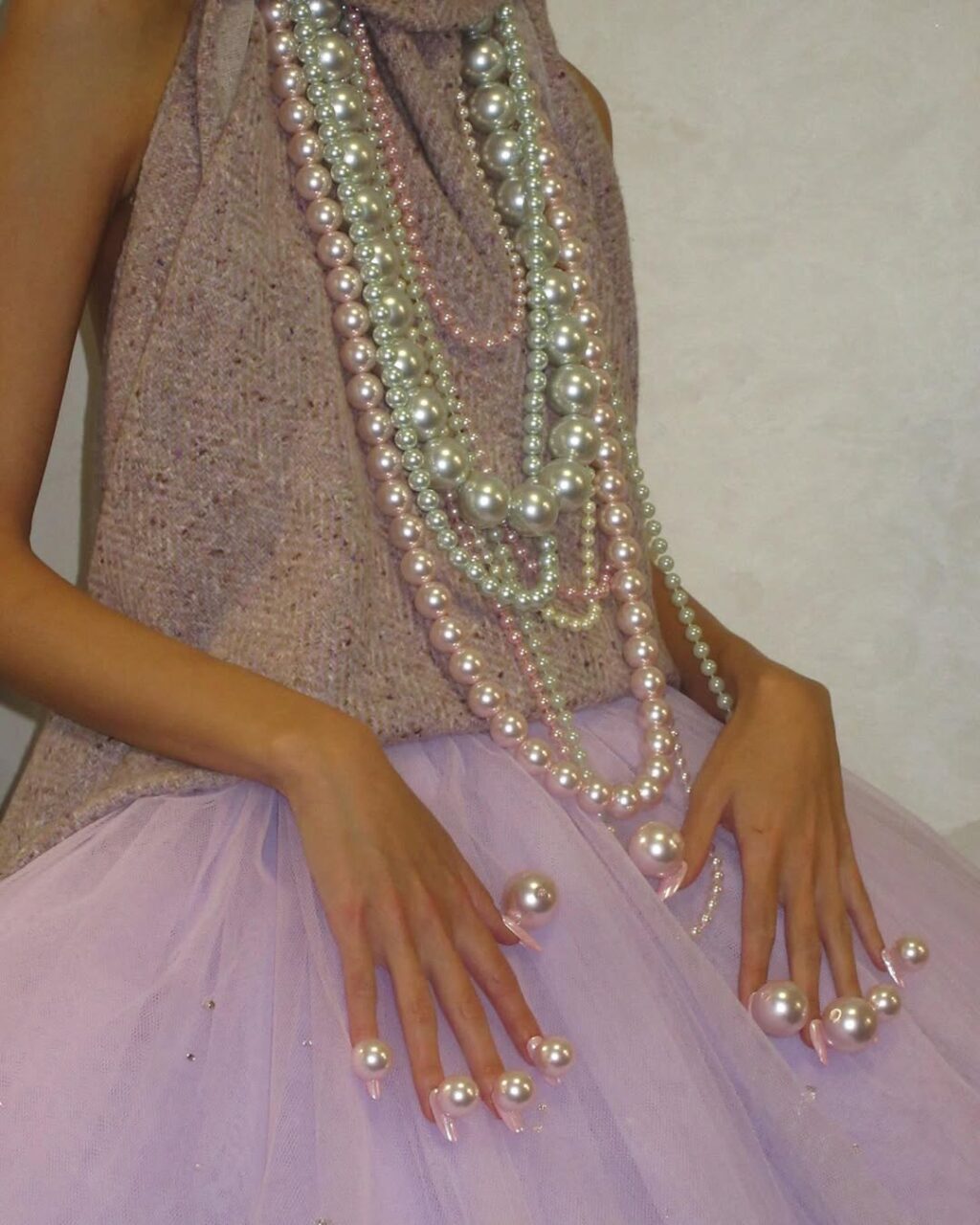What does scent mean to you?
For To Summer, the pioneering Eastern fragrance brand that recently opened its first Hong Kong store in Causeway Bay, scent is not just fragrance—it’s a profound way to preserve culture and tell stories.
For Founder Shen Li, To Summer has always been more than a fragrance brand. It is a storyteller, a bridge between the past and the present. This opening marks not only the brand’s first foray into the city but also a milestone in its journey to redefine Eastern aesthetics on a global stage.
At the heart of To Summer lies a philosophy Shen Li dubs “local culture translation.” Her vision is simple yet profound: to honour the soul of a place by reimagining its history and traditions in contemporary ways.
“[Our] commitment to integrating local architecture and traditional elements is central to our philosophy because these spaces inherently hold the most compelling aspects of Chinese culture: history, local heritage, and art,” Li explains. “While a region’s name may change and its people may migrate over generations, the old architecture is its true soul.”
This belief has informed every To Summer location, from the century-old Spanish-style villa in Shanghai to a former Sichuan Fine Arts Publishing House in Chengdu. In Hong Kong, Li found inspiration in the city’s manufacturing boom of the 1960s—a transformative era when countless women stepped out of their homes and into factories, storefronts, and workshops. These unsung heroines, who laboured in textile mills and printing workshops, form the heartbeat of To Summer’s Causeway Bay store.
“’Made in Hong Kong’ is a tremendously important historic signature. The manufacturing boom of the 1960s was what truly helped propel Hong Kong onto the global stage. However, as we delved into this history, we noticed a group of unsung women who had been consistently overlooked., Li says. “They were the ones in the textile mills, plastic factories, and printing workshops whose hands literally wove the golden era of the Hong Kong economy.” This realisation sparked the store’s design concept: to pay tribute to the legacy of “Made in Hong Kong” while celebrating the spirit of female creation.
Stepping into To Summer’s Causeway Bay store is like stepping into a living scrapbook of Hong Kong’s cultural history. The space is divided into four zones, each telling a unique story. The Eastern Ingredients Studio greets visitors with mosaic tiles from the building’s original construction in 1958. Here, rare raw materials and essential oils are displayed alongside rare archival images of female artisans, courtesy of Chang Wai Chun’s lens.
In the Changwu Pavilion, Li collaborated with renowned Hong Kong designer Alan Chan to bring the city’s manufacturing legacy to life. “This name is inspired by the Ming Dynasty scholar Wen Zhenheng’s Treatise on Superfluous Things. Here, “superfluous things” are not merely material possessions, but vessels for personal aesthetics and sentiment,” Li explains. “In this new space for aesthetic living, we created a complete gifting ritual: tasting tea, presenting a chapter, selecting flower stationery, placing the stamp, wrapping the slipcase, and binding the whole package in a wrapping cloth.”
Galvanised iron—a material introduced by Hakka artisans in the 19th century—is transformed into tin boxes and logos. Locally sourced silk from Sham Shui Po’s fabric markets drapes the space, echoing the soft folds of memories from Hong Kong’s textile boom. Even the wrapping cloths and floral stationery, designed by Chan, incorporate classic Hong Kong motifs: iron window grille, the metal gate, mosaic tiles, the Kapok flower, and, of course, the rice-grain bowl pattern that all Hong Kongers grew up with.
The Study Room offers a quieter, contemplative space, where rare books and archival volumes trace the history of Hong Kong’s women and crafts. Finally, the Bathroom reimagines women’s grooming rituals, presenting To Summer’s iconic bath and body collections in a serene, timeless setting.
Alongside the store’s launch, Li introduced Wandering Her City, a journal that maps two walking routes through Hong Kong, connecting female-led handicraft workshops and cultural spaces. From Jin Fa Mahjong’s carved tiles and Po Ling Arcade’s elder seamstresses to Chan Man Carving Workshop’s enduring letterpress printing traditions, the journal invites readers to explore the city through the eyes of its female artisans.
By tracing the footsteps of women like Eileen Chang and Xiao Hong, To Summer offers a reconstruction of Hong Kong’s cultural map, in hopes of tracing the “she-power’ in this city and “paying homage to Hong Kong as a ‘Her City’, allowing the public to understand the many facets of its local culture.”
Li’s passion for highlighting women’s contributions extends beyond Hong Kong. To Summer’s Beijing flagship, launched Nosepaper, an ongoing branded publication dedicated to amplifying women’s voices. “For us, this tribute is more than just a look back,” Li states. “It’s a connection. We hope to carry forward this spirit of female creation and, using Eastern scent as our language, once again allow the world to see the contemporary craftsmanship and finely resilient strength embedded in Eastern aesthetics.”
To Summer’s fragrances, too, are vessels for storytelling. Each scent is crafted to evoke a moment, an emotion, or a fragment of shared memory. Take Void, for example—a fragrance inspired by Chinese tea rituals and Eastern philosophy, designed to evoke stillness and clarity. Or Her, a bold and complex scent that blends French narcissus absolute and Chinese bergamot jungle essence to embody the untamed spirit of modern women. Every note, every ingredient, is meticulously sourced and blended, often over years, to ensure it resonates with the emotion Li wants to convey.
“We know that fragrance is an extremely personal experience. Every individual’s perspective on the same ‘Eastern imagery’ or ‘cultural story’ is unique, so we don’t try to simply recreate a standardised tale. However, the power of scent lies in its ability to transcend those individual differences in perspective and directly evoke a shared emotion and resonance. For example, when we use a scent to depict “leisure”, people may not envision the exact same scene, but they will all be drawn into that feeling of unconstrained, relaxed Eastern artistic conception.”
“Therefore, we skip the challenge of trying to concertise a complex narrative. Instead, we focus on extracting and capturing the core “emotion” and “sense of place” within Eastern culture. We blend ingredients with precision to convey the conception rather than recite a story. This respect for personal experience and focus on shared emotion is what keeps To Summer’s creation process open and full of infinite possibility.”
Beyond the scent, To Summer collaborates with artisans in Jingdezhen, Dehua, and Boshan to create containers that are as much a part of the story as the fragrances they hold. For the 2025 autumn collection, artisans used a jade cold-polishing technique to craft milky jade glass vessels that mimic the texture of Hetian jade.
Our creative origin is found in the collective memory of Eastern peoples, wandering through mountains, rivers, lakes, and oceans, and the poetry and paintings of history, drawing inspiration from moments that are useless yet eternal.
Shen Li, Founder of To Summer
So how does Li stay inspired?
For the founder, it begins with cultivating a deep sensitivity to the world and practising “day-by-day persistence” (日拱一卒), a Chinese philosophy of steady, consistent effort. This mindset is especially critical in scent creation, which, as Li explains, “demands the ability to perceive the most subtle details.” To seek fresh ideas, Li immerses herself in art and culture, allowing herself to “truly feel, listen, and sense.”
The inspiration for the fragrance Nude came from such an experience—encountering Sanyu’s paintings in Taiwan. His depictions of women, embodying “innocent self-possession and carefree spirit,” reflected a profound Eastern wisdom captured in the phrase “my lifelong love is nature.” Inspired by this, Nude avoids floral or fruity notes, instead evoking the natural warmth of skin after a bath: “light, transparent, present yet unobtrusive.” This reflects the Eastern concept of “using emptiness to cultivate substance,” where simplicity creates space for essence to shine. Li likens this philosophy to Nietzsche’s “slow arrow of beauty,” a subtle aesthetic that gradually captivates without overwhelming—an enduring expression of To Summer’s creative ethos.
Looking forward, Li sees Hong Kong as a gateway to the world. “We plan to gradually expand beyond Asia, ultimately integrating into a broader international context,” she reveals. “In a gentle yet enduring way, we want to let Eastern aesthetics flourish anew in contemporary life.”
